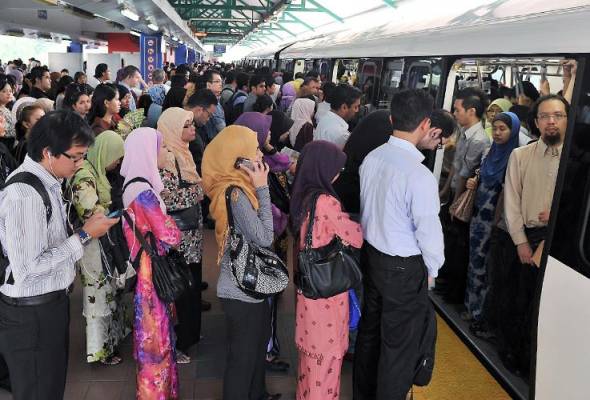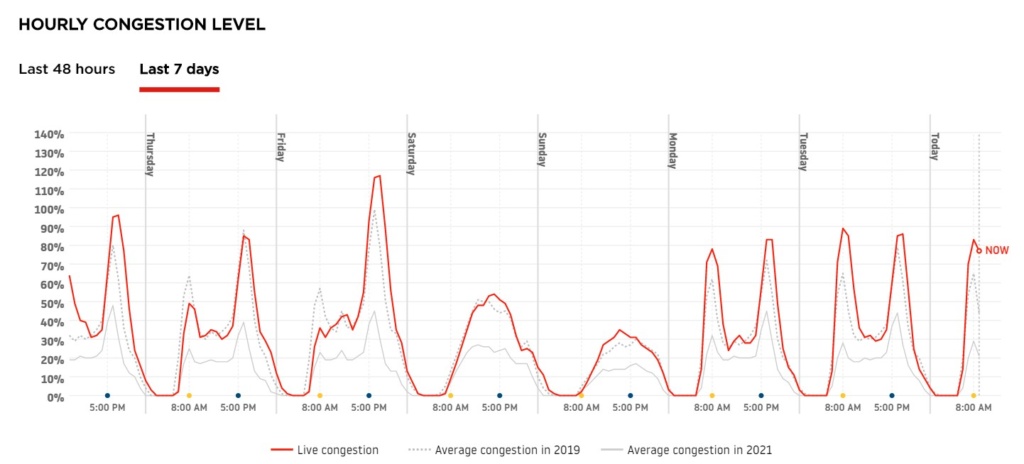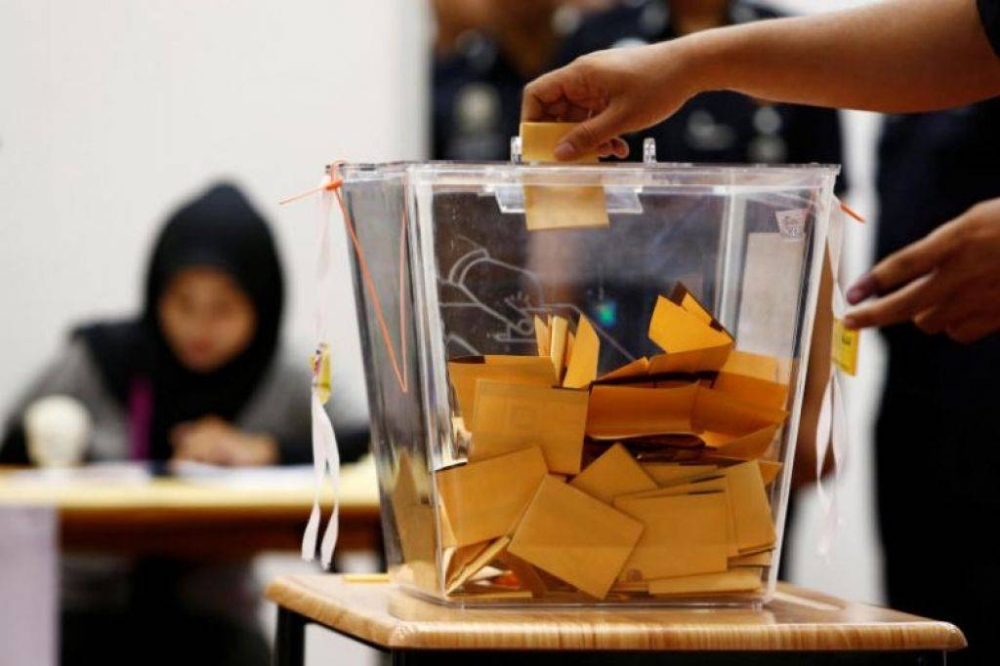
Published in AstroAwani, BusinessToday, FocusMalaysia, Reddit, AsiaNewsToday & theSun, image by AstroAwani.
Why are the trains still so packed during peak hours but at the same time traffic jams are worsening in the Klang Valley?
This has become like a sort of a puzzle (analogous to the productivity puzzle besetting Western economies, i.e., weak productivity growth despite recovery from the Great Financial Crisis, 2008/09).
It’s estimated that workers in the Klang Valley waste 44 hours per working month sitting in traffic jams on average. Traffic jams are time-consuming and can also especially impact the physical, emotional, and mental well-being of commuters who have to drive on a regular basis.

Source: Kuala Lumpur traffic, TomTom International BV
As we can see from the graph above, the average congestion level in Kuala Lumpur in 2022 for the past 7 days (since September 14, 2022) was worse than in 2019.
Evidently, traffic jams are now worse compared to pre-pandemic times in 2019.
The question remains, why are traffic jams worsening?
It’s important to note that the number of newly registered vehicles has climbed by one million every year since 2019. Until September of 2021, the Road Transport Department (JPJ) estimated that there were 21.7 million registered vehicles in use nationwide (“One-third of 33mil registered vehicles’ dormant’”, Free Malaysia Today, June 14, 2022).
Dr Kulanthayan K C Mani, Chairman of the Board of Directors of the Global Alliance of NGOs for Road Safety, pointed out that the pandemic caused a chain reaction that negatively affected traffic conditions, e.g., pent-up travelling demand resulting in “revenge excursion/day-tripping”.
The government’s decision to exempt automotive from the Sales and Services Tax (SST) in June 2020 as part of the National Economic Recovery Plan (Penjana) could also be one of the contributing factors to the skyrocketing number of registered vehicles (“revenge spending”).
In addition, there has been a switch from public to private transportation – in line with the broader global trend – due to then concerns over Covid-19 and lack of sufficient social distancing space which has since persisted longer.
To address this issue, the government has reiterated its push for use of public transportation.
Then (and now caretaker) Prime Minister Datuk Seri Ismail Sabri Yaakob announced a few months ago that the government had approved the construction of the third Mass Rapid Transit Line 3 (MRT3), which had previously been suspended by the previous Pakatan Harapan administration (“Government approves MRT3 construction”, New Straits Times, March 4, 2022).
Nonetheless, it’s intriguing that Budget 2023 didn’t contain any initiatives or measures to invest in our current capacity by e.g., boosting our rolling stock (i.e., the number of train carriages) for our MRT and Light Rail Transit (LRT).
Instead, what we saw was a rather ad-hoc (“as and when necessary”) and piecemeal measures such as the 50% discount on public transportation (LRT, MRT, BRT, KL Monorail and Rapid Bus) as well as subsidy for operating costs of less economical train services in the eastern region (RM33 million).
There’s a critical need to boost the quantity of our rolling stock precisely to accommodate the volume of passengers at peak/rush hours and also by increasing frequencies and thereby ease the pressure on the commuters who have to make do with congestion and overcrowding and recurrent long-waiting time.
At the same time, the quality of services at train stations has also not been given attention in Budget 2023.
This is surprising given the level of dissatisfaction among the commuters as vented on social media, not least.
According to Prasarana (the operator of the multi-modal public transportation services especially centring in the Klang Valley), the MRT, LRT and Monorail increased significantly from 182 million to 236 million trips between 2017 and 2019.
Passenger demand could be expected to revert to pre-pandemic times – despite the acute drop in ridership due to the movement control orders (MCOs) as well as commuting and travelling restrictions, more widely.
Even if not back to the same levels or at least not in the short- to medium-term, the completion of MRT 3 which marks the overall realisation of the Klang Valley’s urban rail network and overlapping with MRT 1 and 2 (via interchange stations) means greater or enhanced mobility for users/passengers which could boost demand.
However, transportation consultant and expert Rosli Khan has questioned whether MRT3 is necessary to tackle Klang Valley’s road congestion (“Is there a need for MRT3?”, Free Malaysia Today, August 21, 2022).
MRT 3 projects only about 180,300 passengers per day (“MRT3 seen to carry 180,300 passengers per day upon completion, up to 1.01m by 2060, says Wee”, The Edge Market, August 4, 2022).
As Rosli Khan has pointed out, the MRT 1 project was initially assumed to carry about 400,000 passengers a day, and the congestion level along the MRT1 line would decrease. But in the end, MRT1 only carried about 200,000 daily on average (“MRT Kajang Line has high passenger volume potential, says CEO,” The Malaysian Reserve, July 20, 2020).
On June 16, a one-month free rides on the Rapid KL public transport network was announced to address issues regarding congestion and cost of living, causing the average daily bus and train users to increase by 11% and 18%, respectively (See “16 per cent rise in average Rapid KL users during free ride campaign” New Straits Times, July 20, 2022).
Besides that, Prasarana Malaysia Bhd also offered free rides for one month to people with disabilities (PwD) in conjunction with the 65th Merdeka celebration until September 30.
However, many have taken to social media to call on the government to quickly solve issues relating to first-and-last-mile connectivity, train breakdowns and infrequency (“Thanks for the free rides, but please improve services first”, New Straits Times, June 17, 2022).
EMIR Research would like to forward the following policy recommendations and practical solutions to enhance passenger ridership with particular reference to Prasarana:
- Increasing frequencies – in order to reduce waiting time – by an emergency purchase of rolling stock from our designer (based in the US) and manufacturer (based in Germany).
If need be, manufacturing could be expedited by transferring the book order to China (and also for shipping purposes).
Indeed, based on consistent anecdotal evidence, waiting or a delay of a minute or two more during the morning rush hour makes a world of a difference between arriving on time or being late to work.
The electricity delivery system via the power cables should be examined, upgraded and re-configured to accommodate increased capacity, alongside also constant checks and inspections, including the circuit breakers, for example.
This is also to pre-empt breakdowns – which would lead to further delays and exacerbate the woes of commuters.
- Extending the peak hour until 10 a.m. at least on a temporary basis which can later be renewed if necessary – to further enhance frequency time.
A Twitter user, @ohhliyaaaa, had pointed out that she had waited more than 20 minutes at the Lembah Subang LRT station due to cramped coaches until 9 am which is the end of peak hour.
- Repairing all broken escalators, faulty lifts, non-functioning air-conditioners, defective ticket vending machines, and addressing other technical issues and ensure constant maintenance – within a specified time limit (e.g., within 24 hours maximum).
There must be a contingency plan put in place – so that if a service team on-call is unavailable, another can be quickly deployed (e.g., from another building or station).
In the long-term, there must be upgrades and further improvements.
- Providing ample parking spaces at MRT and LRT stations. If need be, commandeer empty spaces adjacent to the stations to convert into carparks.
Other than that, let’s take a look at Japan – which is well-known for its strict adherence to punctuality in train services.
The Japanese practice a shaming culture in the form of “awarding” delay certificates called “chien shōmei sho” (certificate of lateness) whenever a train is five minutes late or more.
At the same time, commuters can also produce the certificate to their bosses, teachers, or superiors as a valid excuse for being late.
Perhaps, Prasarana can also provide a delay certificate, but instead of a card, we can make use of the current PULSE mobile application in giving out a digital version.
Aside from that, to attract more commuters, we should also follow Indonesia’s efforts in making public transport more interesting. As mentioned by Billy Junior, CEO of Pandora Box, “We want to tell young people that taking public transportation can be something cool too” (“Jakarta’s ‘zombie’ train confronts traffic apocalypse”, The Malaysian Reserve, September 8, 2022).
On August 25, 2022, PT LRT Jakarta and event organiser Pandora Box launched a “Train to Apocalypse” (akin to a reality TV show) event that lasted for two weeks, inspired by the Korean zombie movie “Train to Busan” theme.
Actors dressed up as zombies and tattered clothes splattered with “blood” drag their way through the carriage corridors to terrorise passengers. Fake soldiers then step in to fend off the zombies and protect the terrified passengers.
The train ride costs IDR60,000 to 70,000 (USD4 to USD4.70).
Prasarana should likewise promote public transport in exciting and entertaining ways increase the ridership popularity and revenue. The revenue can be spent on fixing the technical issues facing our rail stations without having to increase the price of the My50 travel pass, for instance.
We need to move beyond mere infrastructure.
There is a critical need to pay attention and focus on thinking about service enhancement also and how public transportation as embodied by train commuting can be made more exciting and appealing.
The saying, “First World infrastructure, Third World mentality” remains apposite, sadly.
Jason Loh and Anis Salwana Abdul Malik are part of the research team of EMIR Research, an independent think tank focused on strategic policy recommendations based on rigorous research.

